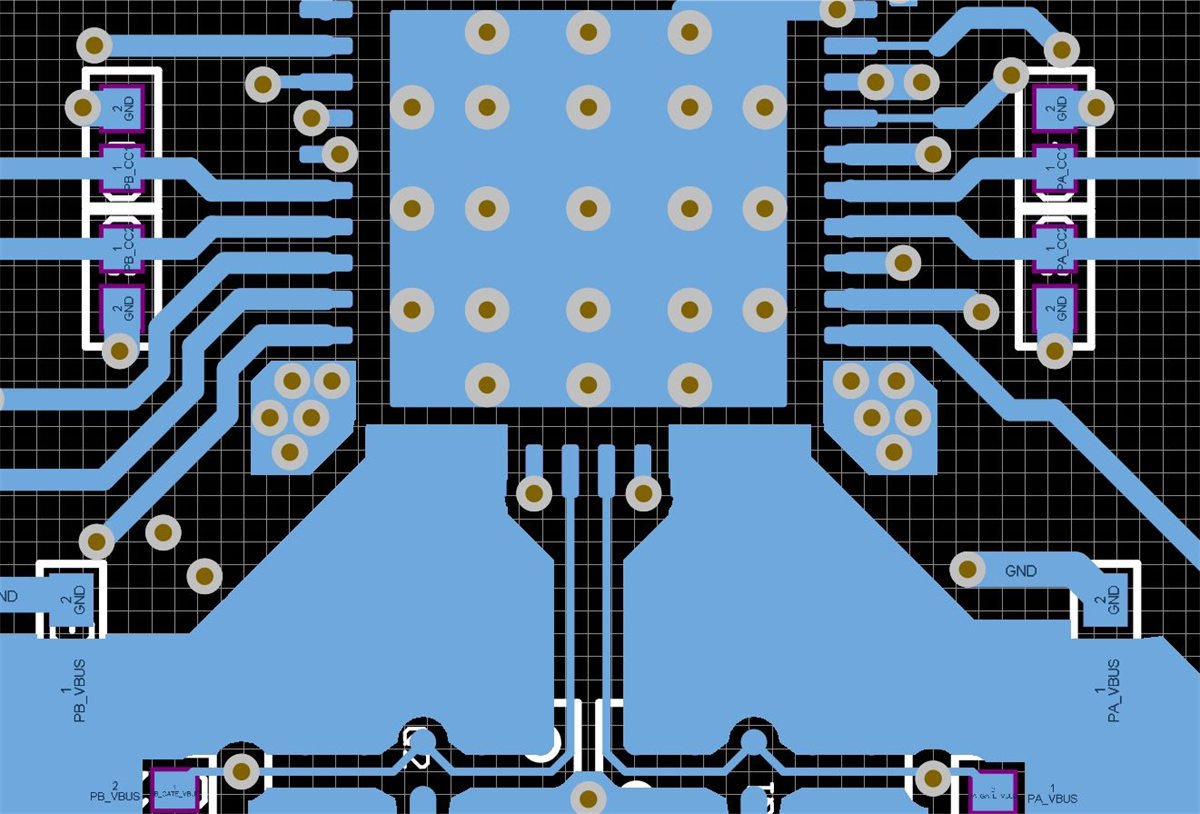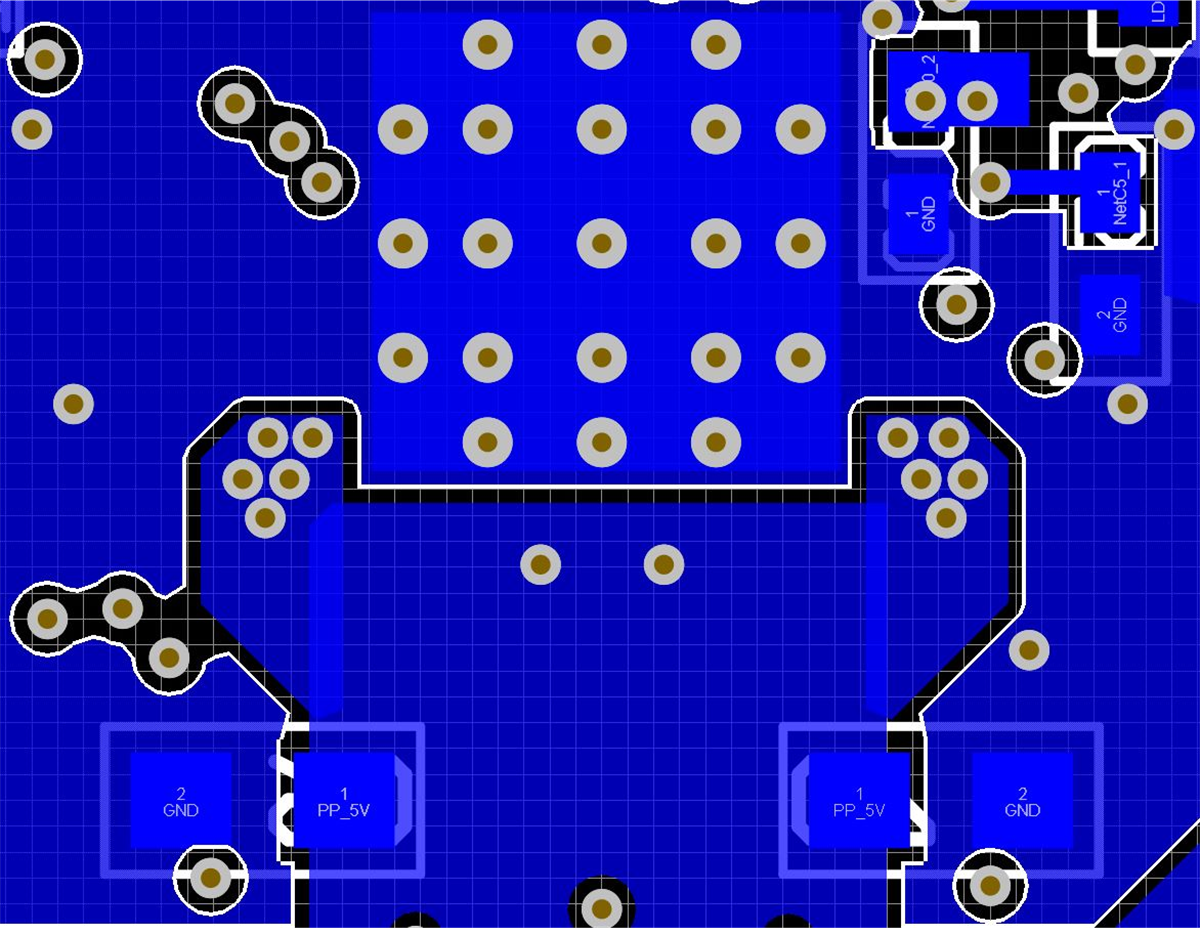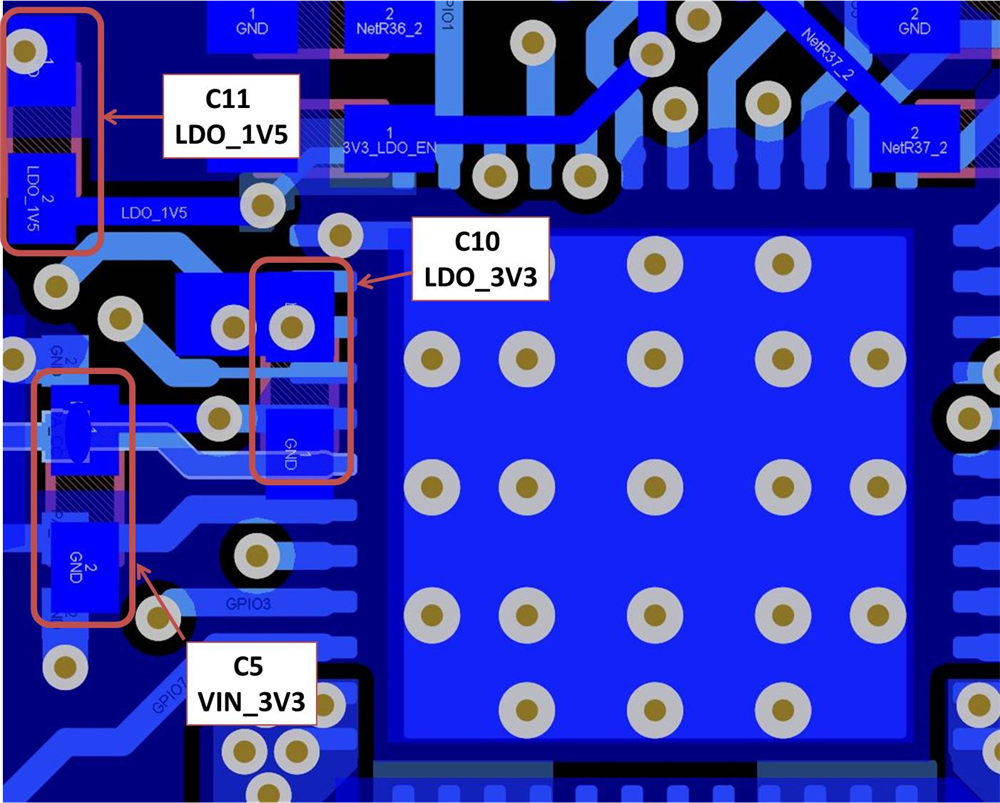JAJSJT6A August 2020 – July 2021 TPS65994AD
PRODUCTION DATA
- 1 特長
- 2 アプリケーション
- 3 概要
- 4 Revision History
- 5 Pin Configuration and Functions
-
6 Specifications
- 6.1 Absolute Maximum Ratings
- 6.2 ESD Ratings
- 6.3 Recommended Operating Conditions
- 6.4 Recommended Capacitance
- 6.5 Thermal Information
- 6.6 Power Supply Characteristics
- 6.7 Power Consumption
- 6.8 PP_5V Power Switch Characteristics
- 6.9 PP_EXT Power Switch Characteristics
- 6.10 Power Path Supervisory
- 6.11 CC Cable Detection Parameters
- 6.12 CC VCONN Parameters
- 6.13 CC PHY Parameters
- 6.14 Thermal Shutdown Characteristics
- 6.15 ADC Characteristics
- 6.16 Input/Output (I/O) Characteristics
- 6.17 I2C Requirements and Characteristics
- 6.18 Typical Characteristics
- 7 Parameter Measurement Information
-
8 Detailed Description
- 8.1 Overview
- 8.2 Functional Block Diagram
- 8.3
Feature Description
- 8.3.1 USB-PD Physical Layer
- 8.3.2 Power Management
- 8.3.3
Power Paths
- 8.3.3.1
Internal Sourcing Power Paths
- 8.3.3.1.1 PP_5Vx Current Clamping
- 8.3.3.1.2 PP_5Vx Local Overtemperature Shut Down (OTSD)
- 8.3.3.1.3 PP_5Vx Current Sense
- 8.3.3.1.4 PP_5Vx OVP
- 8.3.3.1.5 PP_5Vx UVLO
- 8.3.3.1.6 PP_5Vx Reverse Current Protection
- 8.3.3.1.7 Fast Role Swap
- 8.3.3.1.8 PP_CABLE Current Clamp
- 8.3.3.1.9 PP_CABLE Local Overtemperature Shut Down (OTSD)
- 8.3.3.1.10 PP_CABLE UVLO
- 8.3.3.2 Sink Path Control
- 8.3.3.1
Internal Sourcing Power Paths
- 8.3.4 Cable Plug and Orientation Detection
- 8.3.5 Default Behavior Configuration (ADCIN1, ADCIN2)
- 8.3.6 ADC
- 8.3.7 DisplayPort Hot-Plug Detect (HPD)
- 8.3.8 Digital Interfaces
- 8.3.9 Digital Core
- 8.3.10 I2C Interface
- 8.4 Device Functional Modes
- 9 Application and Implementation
- 10Power Supply Recommendations
- 11Layout
- 12Device and Documentation Support
- 13Mechanical, Packaging, and Orderable Information
11.4 Routing PP_5V, VBUS, VIN_3V3, LDO_3V3, LDO_1V5
On the top side, create pours for PP_5V and VBUS1/2. Connect PP5V from the top layer to the bottom layer using at least 7 8-mil hole and 16-mil diameter vias. See Figure 11-6 and Figure 11-7 for top and bottom layer via placement and copper pours respectively.
 Figure 11-6 VBUS1 and VBUS2 Copper Pours and Via Placement (Top)
Figure 11-6 VBUS1 and VBUS2 Copper Pours and Via Placement (Top) Figure 11-7 PP5V Copper Pours and Via Placement (Bottom)
Figure 11-7 PP5V Copper Pours and Via Placement (Bottom)Next, VIN_3V3, LDO_3V3, and LDO_1V5 will be routed to their respective decoupling capacitors. This is highlighted in Figure 8. Connect the bottom side VIN_3V3, LDO_1V5, and LDO_3V3 capacitors with traces through a via. The vias should have a straight connection to the respective pins.
As shown in Figure 11-5 (3D view) these decoupling capacitors are in the bottom layer.
 Figure 11-8 VIN_3V3, LDO_3V3, and LDO_1V5 Routing
Figure 11-8 VIN_3V3, LDO_3V3, and LDO_1V5 Routing